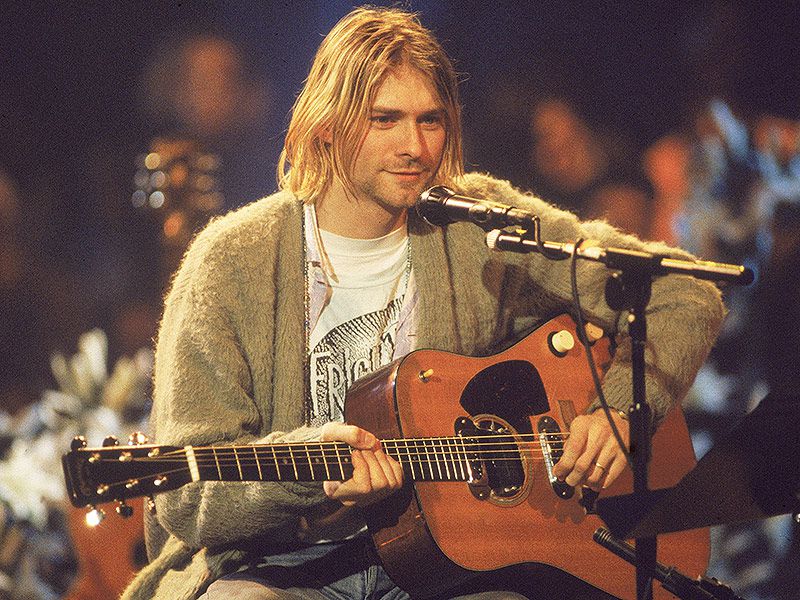Mysteries Behind Kurt Cobain Death
His celebrated, albeit brief, career was the source of all those banners, but they have only grown stronger over the years. The guy behind the curtain, Kurt Cobain, was a severely disturbed soul. Before Kurt Cobain death, he was diagnosed with bronchitis and severe laryngitis.
Author:James PierceReviewer:Emily SanchezJan 30, 20242.7K Shares77.8K Views

The rock sensation Kurt Cobain had an aura that was all his own. Very few musicians retain their aura of mystery after death. He is one of the primary figures that spring to mind when one considers the 27 Club; he was also a renegade, a grunge crusader, and a counterculture god.
His celebrated, albeit brief, career was the source of all those banners, but they have only grown stronger over the years. The guy behind the curtain, Kurt Cobain, was a severely disturbed soul. Before Kurt Cobain death, he was diagnosed with bronchitis and severe laryngitis.
During most of his time in the limelight, he medicated his long-term battle with depression with alcohol and narcotics. His problems reached a peak on April 5, 1994, when he committed suicide by shooting himself in the head.
Who Was Kurt Cobain?
Kurt Donald Cobain was a founding member of the rock band Nirvana and a talented musician from the United States. He was the main singer, guitarist, and major composer.
His prominence as an alternative rock icon and his role as a spokesperson for Generation X have earned him widespread acclaim. In 1987, Cobain, Krist Novoselic, and Aaron Burckhard created Nirvana, solidifying their place in the grunge music scene that was thriving in Seattle.
With the help of DGC, the band's critically acclaimed second album Nevermind (1991) and its lead single "Smells Like Teen Spirit" achieved commercial success. "About a Girl," "All Apologies," "Aneurysm," "Come as You Are," "Heart-Shaped Box," "In Bloom," "Lithium," "Something in the Way," and "You Know You're Right" are just a few of the popular Nirvana songs that Kurt Cobain notably penned.
Addiction to heroin, persistent despair, and the emotional and psychological stresses of celebrity all contributed to Cobain's downfall. His daughter Frances was born out of his troubled marriage to fellow artist Courtney Love, which kept him in the public eye.
After an overdose of champagne and Rohypnol in March 1994, he went through detox and intervention. At the age of 27, his body was discovered in his garage on April 8, 1994. The police determined that he had died around three days prior from a shotgun gunshot to the head that he had self-inflicted.
The Story Behind Cobain Death
As a means of self-medication for his despair and other mental health difficulties, Nirvana frontman Kurt Cobain turned to opiates. According to his wife, Courtney Love, Kurt Cobain had three suicide attempts before he finally took his own life.
He was asked to enter a treatment facility in Los Angeles by Love and his bandmates, but he abruptly left without giving any notice. Cobain took his own life at their Seattle home with a shotgun, while Love hired a private detective to track him down. An electrician who was working on the residence discovered him three days after he committed suicide.
As he took his own life, Kurt Cobain left behind a suicide note that detailed his thoughts on celebrity, his devotion to his followers, and his gratitude to his family.
“„I don't have the passion anymore, and so remember, it's better to burn out than to fade away.- Last line of Kurt Cobain death note
One Nirvana fan committed suicide a few weeks following Cobain's death, leaving behind a letter that was identical to Cobain's. This incident highlights the intriguing impact of Cobain's death on his supporters. The abrupt departure of the band's lead singer left fans in a state of profound despair.
FBI Report About His Death
In a ten-page dossier on Nirvana vocalist Kurt Cobain, the Federal Bureau of Investigations (FBI) included letters from those who thought Cobain's death was a murder. Cobain took his own life on April 5, 1994, in Seattle, Washington.
After reviewing the suicide note found at the residence, the Seattle Police Department determined that Cobain had committed suicide by shooting himself.
The 27th anniversary of Kurt Cobain's death was celebrated in April with the release of a 10-page file by the FBI. In the initial letter, dated September 24, 2003, references were made to a number of sources, including the 1998 book Who Killed Kurt Cobain?
The Mysterious Death of an Icon, the 1998 film Kurt & Courtney, dealt with the relationship between Kurt Cobain and his wife, the musician Courtney Love, and a private investigator employed by Love from California who suspected foul play.
Evidence supposedly presented in the second letter, which was stamped November 20, 2006, included the fact that fingerprints were not on the gun, the fact that some of his suicide note was written in a different handwriting, and the 2001 book Love and Death: The Murder of Kurt Cobain.
Linda M. Trigeiro-Pabst, an agent from the FBI's executive secretariat office, signed the responses that were provided to both parties. They understood the gravity of the situation and were concerned that Mr. Cobain might have been a murder victim, but they did not find any evidence of a federal law violation during their investigation.
While the FBI did have identical correspondence with a third party in 2000, the file did not contain the specifics of the third party's first concern in their communications with U.S. Attorney General Janet Reno.
At the very end of the file, you can see a fax dated January 30, 1997, which was addressed to the FBI offices in Washington, D.C. and Los Angeles, as well as many NBC executives from the production company Cosgrove/Meurer, who produced the documentary series Unsolved Mysteries.
Due to the "inconsistencies" in the case, Grant, a private investigator located in Los Angeles and a former officer for the Los Angeles County Sheriff's Office, thought that the determination of Cobain's death as a suicide was unfair.
FAQs - Kurt Cobain Death
What Were The Circumstances Surrounding Kurt Cobain's Death?
Kurt Cobain's death occurred on April 5, 1994, in his home in Seattle, Washington. He was found by an electrician three days later, and the cause was ruled as suicide.
How Did Kurt Cobain's Downward Spiral Lead To His Death?
Cobain's downward spiral included a coma in Italy induced by mixing champagne and Rohypnol. His struggles with heroin and threats of suicide were evident, leading to interventions and a stint in rehabilitation shortly before his death.
What Role Did Substance Abuse Play In Kurt Cobain's Death?
Substance abuse, particularly heroin, played a significant role in Cobain's life and struggles. His battle with addiction was a contributing factor to the events leading up to his untimely death.
Were There Concerns About Kurt Cobain's Well-being Before His Death?
Yes, there were concerns about Cobain's well-being, prompting interventions by friends and family. His erratic behavior, threats of suicide, and possession of firearms raised alarm among those close to him.
How Did Kurt Cobain's Death Impact The Music World?
Kurt Cobain's death had a profound impact on the music world, marking the end of an era in rock music. Nirvana's influence and Cobain's legacy continue to shape the industry, while discussions about mental health and the pressures of fame persist.
Final Thoughts
Kurt Cobain, the influential frontman of Nirvana, tragically ended his life on April 5, 1994, leaving a void in the music world. The circumstances surrounding Kurt Cobain's death, including a history of struggles with substance abuse and mental health, have fueled speculation and skepticism.
Despite the official ruling of suicide, some have questioned the events leading to his demise, pointing fingers at his wife, Courtney Love. Cobain's turbulent journey, marked by a coma in Italy and struggles with heroin, culminated in a heartbreaking conclusion.
His untimely death not only marked the end of an era in music but also sparked enduring discussions about the pressures of fame and the complexities of mental health in the spotlight.

James Pierce
Author

Emily Sanchez
Reviewer
Latest Articles
Popular Articles
